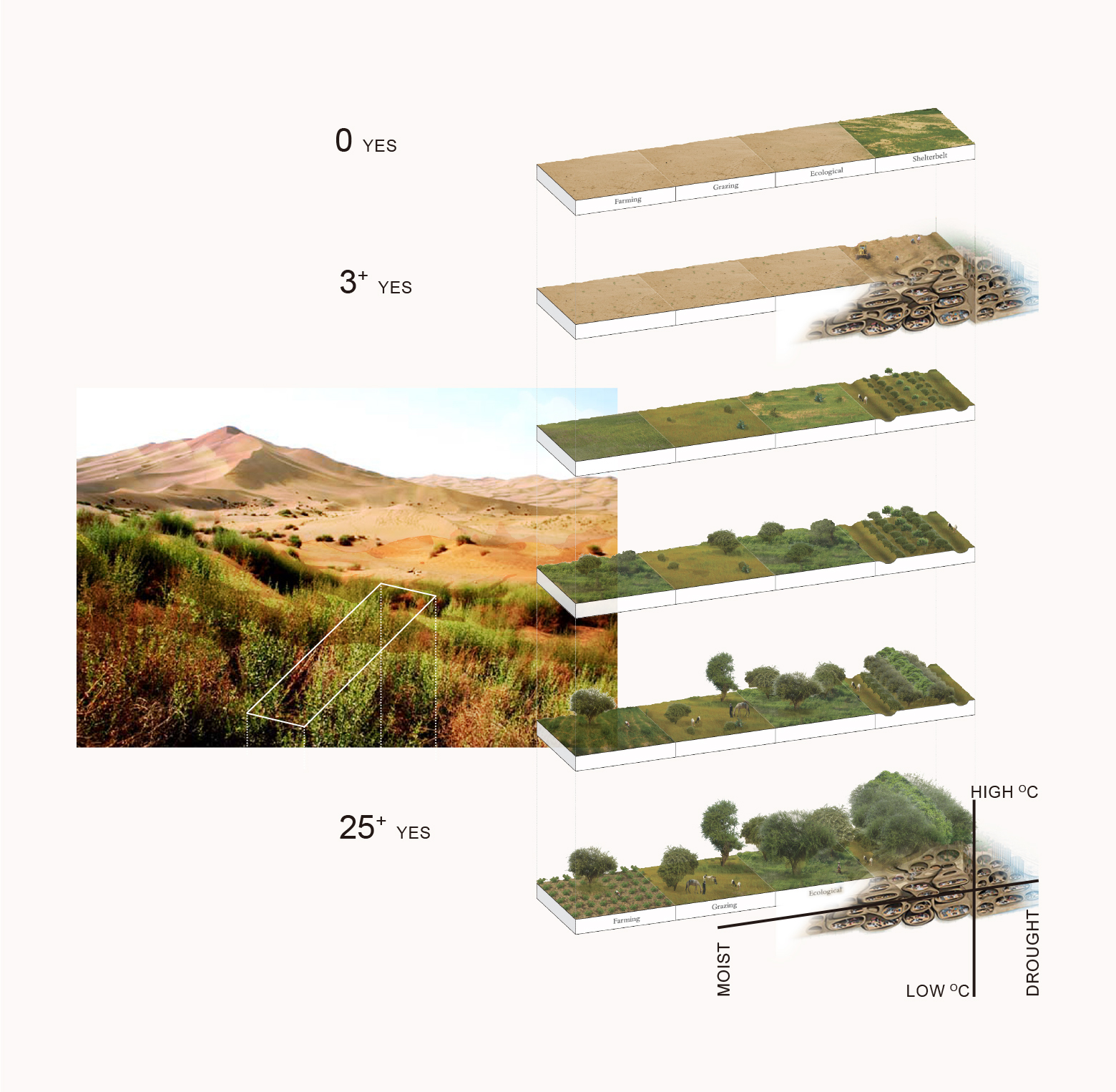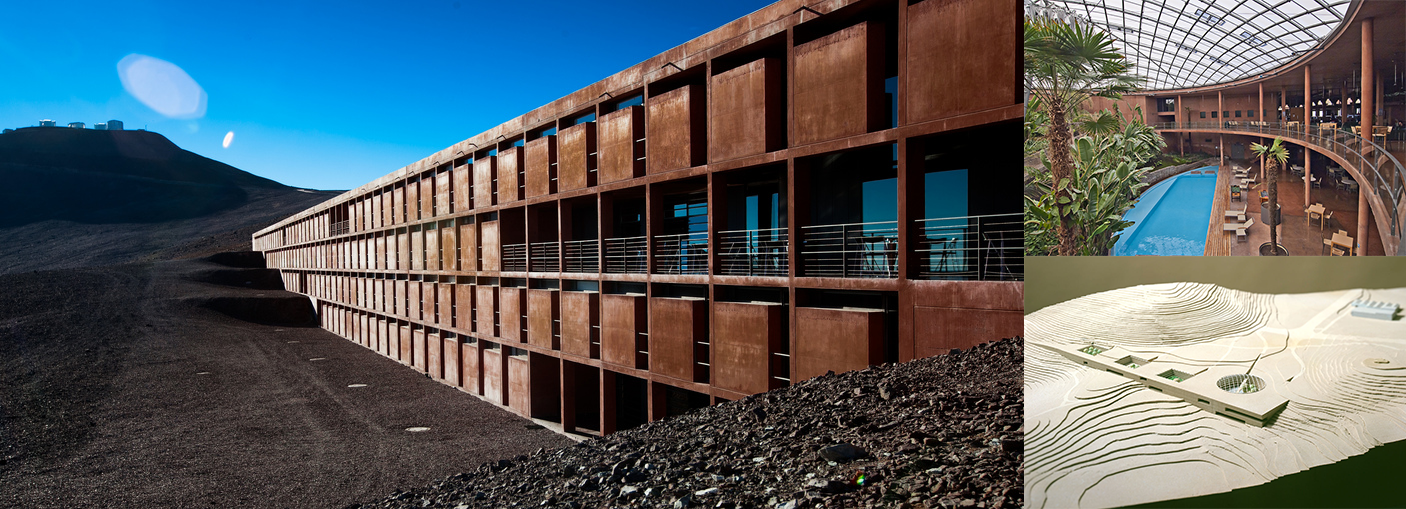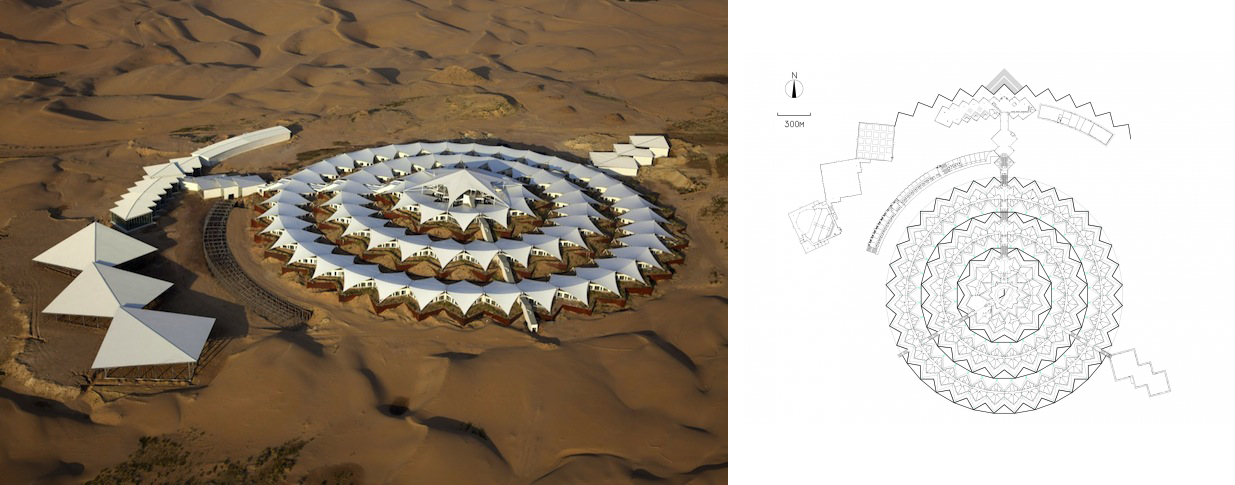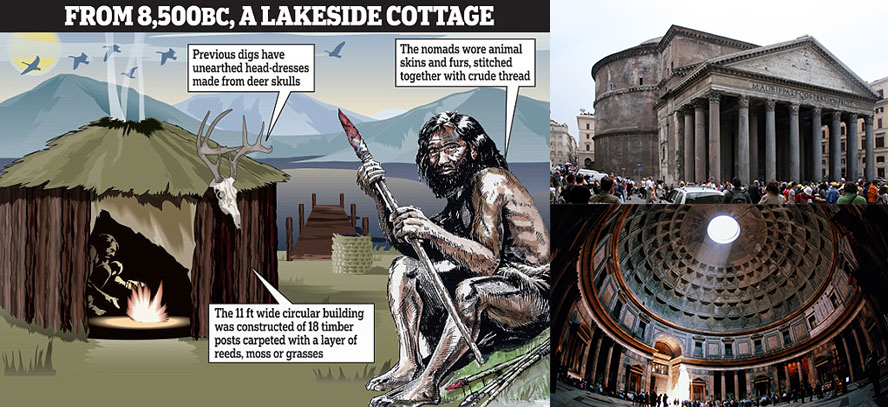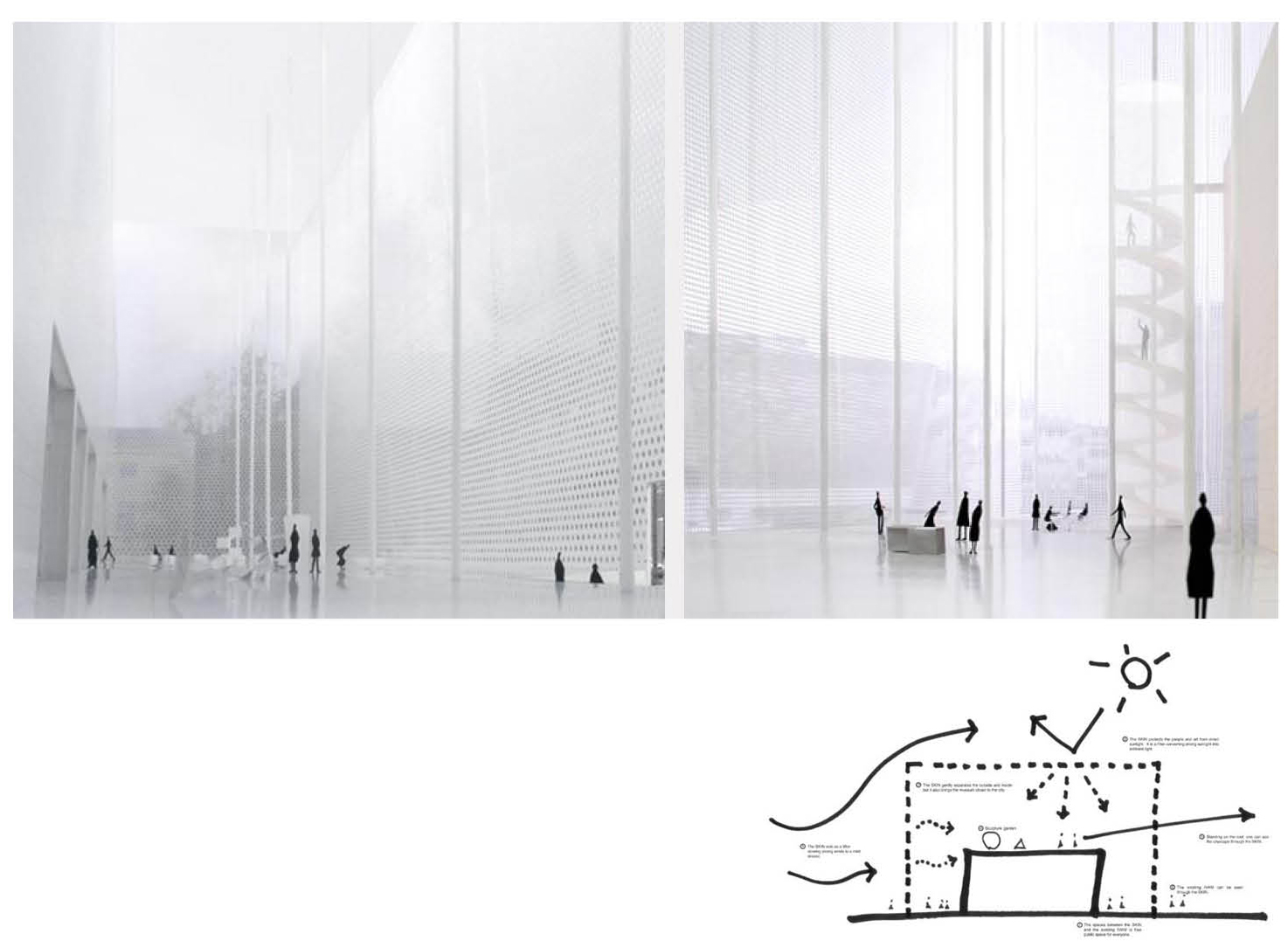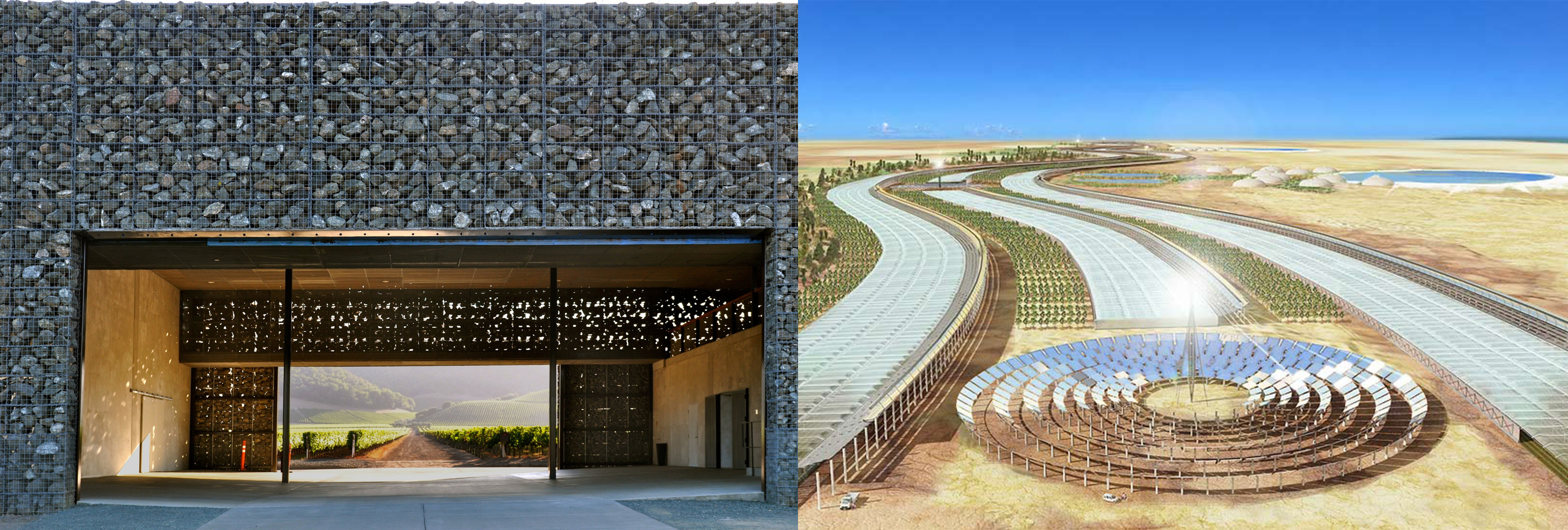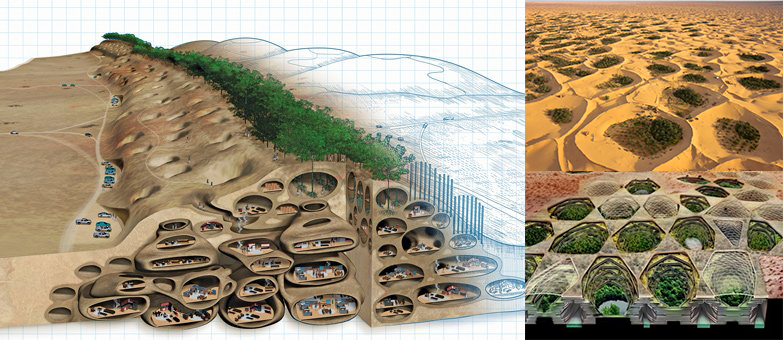Towards Weather-Architecture
|
ARTIFACT This thesis explore a new relationship between three——people, architectural interface and exterior climate to replace the relationship between two——architecturae(including people) and exterior climate. Renegotiating the relationship is crucial in creating sustainable environments that simultaneously able to exploit the exterior climate while maintaining a protective enclosure. There are three elemental aspects of architecture——program, skin, atmosphere——and their relationship to weather providing us possibilities to inject instability of weather into an static architecture. WHAT In order to make changes of exterior climate can be perceived strongly by buildings’ occupants, elements of weather should be able to affect architecture even mechanical system has met indoor comfort need. There are three elemental aspects of architecture——program, skin, atmosphere——and their relationship to weather providing us possibilities to inject instability of weather into a static architecture. Given this, I will choose the project according to: 1.The site has a number of different types of climate; 2.The project should allow indoor comfort level to change in allowable range; 3.Climate change play an important role in production and living conditions of residents; 4.The site should be available for some natural media like water, light and fog. The test case therefore is picked in farming-pastoral ecotone of Inner Mongolia which is the transition zone from semi-arid to arid areas and from farming land to grazing area. On the one hand, the district is rich of climate change. On the other hand, the area is extremely sensitive to climate variability and its function of maintaining ecological balance is fragile. Because of this, climate change not only has a direct and indirect impact on livelihood of farmers and herdsmen, but also affects the mode of their life. Renegotiating the relationship between uses, interface (architectural systems), and weather is crucial in creating sustainable environments that simultaneously able to exploit the exterior climate while maintaining a protective enclosure. My thesis thus will take advantage of the characteristics of site and local lifestyle to exploit potential capacity of architecture acting a medium instead of a shelter between people and exterior climate, exploring a new kind of triadic relation. The target architecture type is a complex including housing, business, hotel and farming and so on. WHY In ancient times, humans built houses by using “branches and animal skins” to weave to enclose space, out of desire to adapt to nature and basic need for living space. Houses sheltered people from rain, wind, snow, fog and extreme temperature. Under this condition, a direct relationship that people can perceive the change of the exterior climate still maintained by the openings on the envelope which has the function of enclosing space and load-bearing. Moving forward, most classical architecture were hermetically sealed (as best as possible) from the elements of weather, effectively cutting off the outside world from the inside—architecture becoming the defining line of separation. In 19th century, new materials and new technologies brought by the Industrial Revolution helped architectural envelope transform dramatically. The application of modern materials such as concrete, steel and glass and the appearance of frame structure and all kinds of large span structure made the building surface get rid of the dependence on structure system, and then the enclosed space began to break. With glass and mechanical system prevailing in buildings, particular aspects of weather were allowed to permeate the interior of a building, namely sunlight, which enabled an emerging relationship (visual and light connection) to occur between the interior and exterior. But at the same time, users’ ability to sense the external environment were weakened because of the comfort interior climate. In the 1990s, the energy crisis made people aware of the problem of building consumption. Design and construction professionals have focused on tackling this issue. The architectural design adaptive to the climate, using natural lighting and ventilation is displacing hermetic architecture. Architectural surface was beginning to be viewed as the connection and transition between indoor and outdoor climate both spatially and physically, which was called building skin. It evolved from a single layer (window, shutter and other retractable shading able to adjust the interior climate) to multiple layers (like the combination of double glazing,air layerand shading layers), and has become an independent architectural element. Nowadays skin designing have two trends: one is ecology and technology, it’s representative men include Thomas Herzog, Sauerbruch Hutton and Charles Correa who put forward “form follows climate”. The other is material and human visual feeling, Herzog & De Meuron focus on recyclable construction materials. They took advantage of the heat absorption performance of stone and the thermal insulation property of glass in Dominus Winery to adapt to the dramatic daily temperature difference. Furthermore, some new adaptive structure like membrane structure and porous materials are applied to buildings. Giving an overall of development process, architects always regards users and architecture as a whole and focus on the sustainable issue. Entitled “smart material”, these skins are functionally adaptive through a change in their inherent properties—allowing building facades to respond to various weather conditions. Though such skins reduce a building’s environmental footprint, they don’t help architecture establish a new relationship between users and weather. My thesis tend to explore spatially a potential permeability of interface (building skin) to build the relationship which make exterior climate more perceptible to users. HOW Step 01 – The first step would be researching how the exterior climate affects the interior environment via the architectural skin, together with studying of how traditional and modern buildings use design methods, architectural materials and construction and technologies to reduce the detrimental effects and exploit the beneficial aspects of elements of weather; BIBLIOGRAPHY Bibliography 01: Theory: Bibliography 02: Techniques: Bibliography 03: Project:
|
